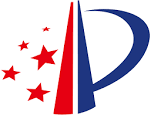 September 1, 2018 is a big day. It is the day that everything changes for US utility patent applicants who are claiming priority from Chinese priority applications.
September 1, 2018 is a big day. It is the day that everything changes for US utility patent applicants who are claiming priority from Chinese priority applications.
For many years, US utility patent applicants who claim priority from Chinese patent applications have been used to the availability of PDX. You file your US application, and you often don’t even have to think about how the certified copy of the priority application will get communicated from the SIPO (Chinese patent office) to the USPTO. In an automatic way, somebody at the USPTO notices the priority claim in the ADS, and they push a button and the electronic certified copy arrives through the PDX system.
The other way that USPTO retrieves certified copies of priority applications is DAS. The applicant who wishes to rely upon DAS as the way for the electronic certified copy to reach the USPTO is required to provide the “DAS access code” to the USPTO. There is a space for this in the ADS, and there is a space for this in Form PTO/SB/38.
The USPTO and the SIPO both belong to DAS. So you might have thought that DAS would be the way to get a certified copy from the SIPO to the USPTO. But the rule at the USPTO for all these years has been that PDX trumps DAS. You pick any two Offices that belong to DAS, and if those same two Offices also belong to PDX, then USPTO will only use PDX and will not use DAS.
(This problem of “PDX trumps DAS” explains why, for all these years, US design applicants have not been able to use any electronic means for getting a design priority application from the SIPO to the USPTO. The September 1 development will be a big help for those US design applicants. See my blog article about SIPO and USPTO and design filings.)
So anyway, September 1, 2018 is the big day when USPTO will pull the plug on PDX with respect to the Chinese patent office. (I blogged about this “pulling the plug” in a blog article in October of 2017.) Starting on that day, USPTO will use DAS, not PDX, for retrieving electronic certified copies from the SIPO.
The main way this will affect US practitioners is that starting on September 1, 2018, you are going to need to provide the DAS access code to the USPTO. This means you will somehow need to know the DAS access code. Probably the only way to obtain the DAS access code will be to get it from the Chinese practitioner who filed the priority application.
What should you do when you get your hands on the DAS access code? Well, of course you should communicate it to the USPTO. (You would do this in an ADS or in Form PTO/SB/38.) But that’s not the only thing you should do. You should also obtain a Certificate of Availability from DAS for the priority application. This reduces to a minimum any risk that the DAS retrieval would fail due to some misunderstanding about the application number or filing date or DAS access code or the fact of the Chinese patent office having made the application available to DAS.
A second important action step, for anyone who plans to use this new DAS relationship between the Chinese patent office and the USPTO, is to get into the habit of always setting up “tracking” in DAS for the Chinese priority application. This is a sort of digital tripwire that will let you know the moment that USPTO retrieves the electronic certified copy from DAS.
These developments affect at least two kinds of US utility patent applications.
One kind of application affected by these developments is the US utility application that claims priority under Article 4 of the Paris Convention from a Chinese utility application (typically, a utility application filed within the past 12 months).
A second kind of application affected by these developments is a bypass continuation from a PCT application that claims priority under Article 4 of the Paris Convention from a Chinese utility application.
If you have not already done so, I invite you to see if you can pass a simple quiz on the DAS system.
I wish that I could say that I was on top of this development regarding PDX and the Chinese patent office. But I was not. The only reason I had a clue about this is that alert reader Cheryl Ferne, an IP Foreign Patent Paralegal at Lathrop & Gage, drew my attention to it.

Carl, How can one also obtain a Certificate of Availability from DAS for the priority application?